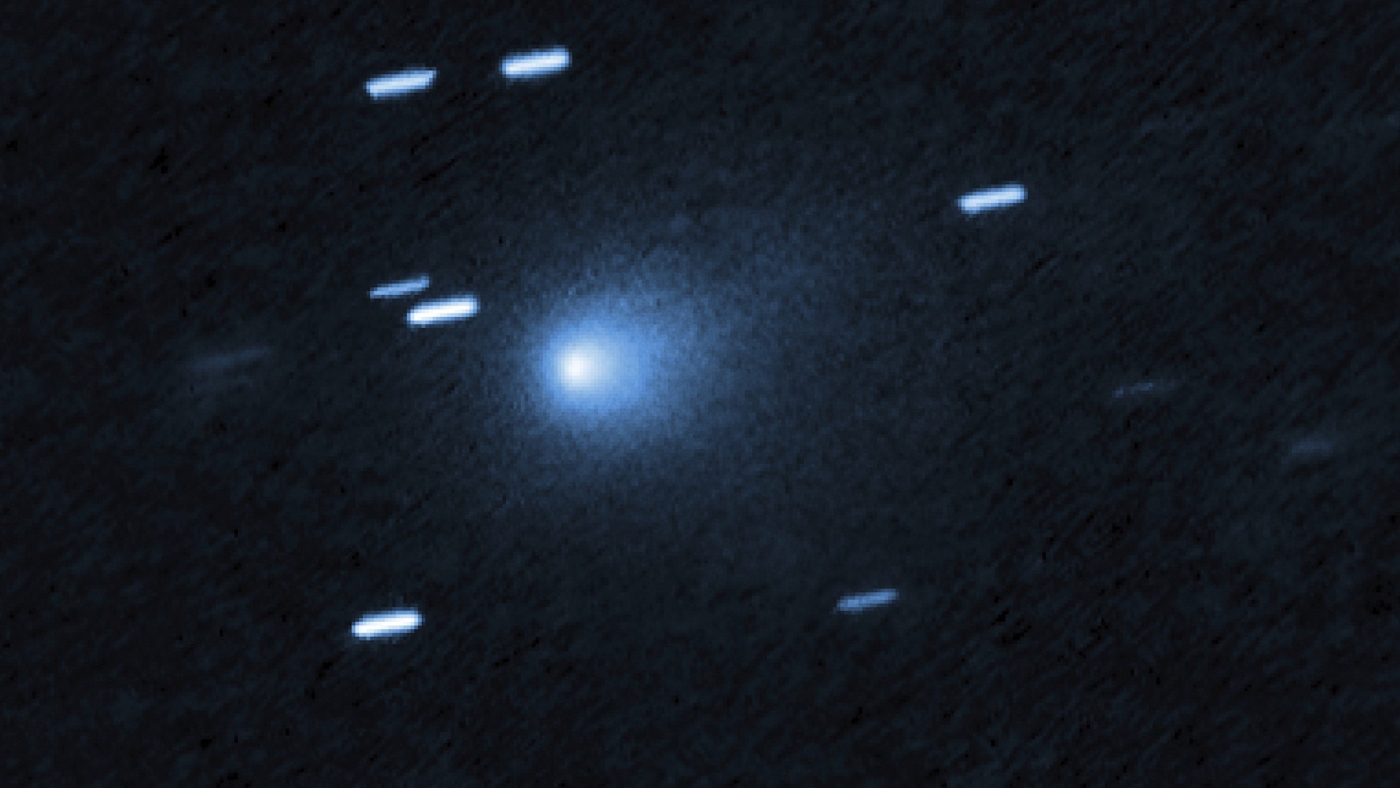Science
Interstellar Comet 3I/ATLAS Offers Unique Insights into Cosmic Origins

An ancient comet from beyond our solar system, designated 3I/ATLAS, has captured the attention of scientists following its arrival this summer. This celestial body provides a rare opportunity to study planetary systems far removed from our current technological reach, offering insights into the origins of materials that may date back billions of years.
The significance of 3I/ATLAS lies not only in its interstellar origin but also in the detection of nickel vapor in the gas surrounding it. This finding marks the first instance of such a metal being identified at a distance nearly four times that of Earth from the sun, where temperatures typically prevent metals from vaporizing. According to Darryl Z. Seligman, an assistant professor of physics and astronomy at Michigan State University, observing this rare comet is “extremely valuable” as it presents a unique chance to analyze an object before it exits our solar system.
The comet was first confirmed on July 1, 2023, through a sky survey conducted by the Asteroid Terrestrial-impact Last Alert System (ATLAS). Subsequent observations by research teams, including those from the Instituto de Astrofísca-Pontificia Universidad Católica de Chile, revealed the presence of nickel vapor. Rohan Rahatgaonkar, a Ph.D. student involved in the research, noted that the nickel levels increased during their observations using the Very Large Telescope in Chile, which was not initially aimed at detecting such materials.
Unlocking the Secrets of 3I/ATLAS
The research team, led by Thomas Puzia, emphasized the excitement surrounding the nickel detection, stating, “It was pretty clear that it was nickel. So it was super, super exciting.” Despite this breakthrough, Puzia cautions that further evidence collection and analysis are needed to understand the implications of these findings fully.
As 3I/ATLAS approaches the sun, it will experience thermodynamic changes that could trigger additional reactions, potentially offering further clues about its formation and evolution. The comet may even be older than our solar system, as indicated by the chemical signatures it emits. Rahatgaonkar explained that these signatures reflect the comet’s ancient origins and its extensive journey through interstellar space.
Seligman, Rahatgaonkar, and Puzia highlighted the importance of studying interstellar objects like 3I/ATLAS for understanding star systems that formed billions of years ago. These celestial bodies provide invaluable chemical and physical details about their origins, enriching our knowledge of the universe beyond our solar system.
The analysis of 3I/ATLAS continues as international teams collaborate, combining observations from various telescopes and instruments. This ongoing research underscores the potential for new discoveries about the cosmos and the ancient materials that populate it, making 3I/ATLAS a focal point for future investigations into interstellar phenomena.
-

 Sports2 weeks ago
Sports2 weeks agoSteve Kerr Supports Jonathan Kuminga After Ejection in Preseason Game
-

 Top Stories6 days ago
Top Stories6 days agoMarc Buoniconti’s Legacy: 40 Years Later, Lives Transformed
-

 Science2 weeks ago
Science2 weeks agoChicago’s Viral ‘Rat Hole’ Likely Created by Squirrel, Study Reveals
-

 Politics2 weeks ago
Politics2 weeks agoDallin H. Oaks Assumes Leadership of Latter-day Saints Church
-

 Business2 weeks ago
Business2 weeks agoTyler Technologies Set to Reveal Q3 2025 Earnings on October 22
-

 Lifestyle2 weeks ago
Lifestyle2 weeks agoKelsea Ballerini Launches ‘Burn the Baggage’ Candle with Ranger Station
-

 Lifestyle2 weeks ago
Lifestyle2 weeks agoDua Lipa Celebrates Passing GCSE Spanish During World Tour
-

 Entertainment2 weeks ago
Entertainment2 weeks agoZoe Saldana Advocates for James Cameron’s Avatar Documentary
-

 Health2 weeks ago
Health2 weeks agoRichard Feldman Urges Ban on Menthol in Cigarettes and Vapes
-

 Health2 weeks ago
Health2 weeks agoCommunity Unites for Seventh Annual Mental Health Awareness Walk
-

 World2 weeks ago
World2 weeks agoD’Angelo, Iconic R&B Singer, Dies at 51 After Cancer Battle
-

 Business2 weeks ago
Business2 weeks agoMLB Qualifying Offer Jumps to $22.02 Million for 2024









